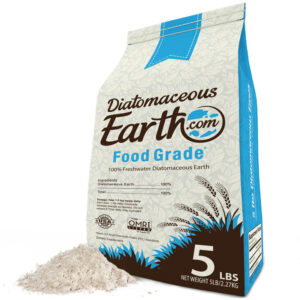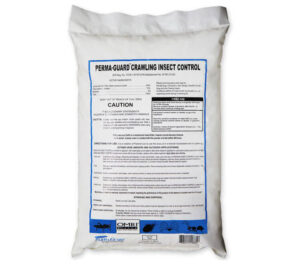Want healthier plants, bigger harvests, and fewer surprises in your greenhouse? Then it’s time to get serious about greenhouse monitoring sensors. Whether you’re a backyard grower or running a full-scale operation, having real-time data on temperature, humidity, light, and soil conditions is a total game changer.
This guide breaks down the best sensors for greenhouse monitoring in 2025—what to look for, how they work, and which ones are worth your investment.
Why Greenhouse Monitoring Sensors Matter
You can’t manage what you don’t measure. That’s especially true in a greenhouse, where small fluctuations in temperature, humidity, or light can seriously impact your crops.
Here’s what the right sensors help you do:
-
Avoid plant stress caused by overheating or humidity drops
-
Optimize irrigation based on actual soil moisture levels
-
Track light intensity for better photosynthesis and growth
-
Receive alerts when conditions go out of range
-
Log data for better planning and troubleshooting
In short, sensors help you grow smarter, not harder.
Best All-in-One Sensor for Greenhouse Monitoring
AcuRite Atlas Weather Sensor
Best for: Comprehensive monitoring of multiple variables
Direct answer: The AcuRite Atlas offers a full suite of environmental tracking—temperature, humidity, light, wind, and more—making it the best all-in-one sensor system for greenhouses.
Why it stands out:
-
Tracks indoor/outdoor temperature and humidity
-
Monitors UV index and light intensity
-
Optional add-ons for wind, rainfall, and lightning detection
-
Syncs with mobile app and desktop dashboard
-
Custom alerts and data logging included
It’s designed for serious growers who want everything in one package. You can mount it inside or near the greenhouse and get up-to-the-minute readings from your phone.
Price range: $200–$300 (depending on add-ons)
Best Soil Moisture Sensor
Vegetronix VH400 Soil Moisture Sensor
Best for: Precision irrigation and water management
Direct answer: The VH400 offers highly accurate soil moisture readings, making it the best sensor for monitoring when and how much to water your greenhouse plants.
What makes it unique:
-
Capacitive sensing for faster, more precise data
-
Works with most data loggers or microcontrollers
-
No corrosion or degradation over time
-
Instant real-time feedback
If overwatering or underwatering has been a problem, this sensor is your solution. Pair it with a smart controller or data logger for automated irrigation decisions.
Price range: $40–$60
Best Temperature & Humidity Sensor
Govee WiFi Thermometer Hygrometer
Best for: Easy-to-use monitoring on a budget
Direct answer: The Govee WiFi sensor tracks temperature and humidity in real time and sends alerts via a user-friendly app, making it ideal for most hobby greenhouse setups.
Key features:
-
WiFi-enabled with remote monitoring via app
-
High accuracy (±0.3°C, ±3% RH)
-
Stores up to 2 years of data
-
Customizable alerts if values go outside your set range
This is a favorite among casual and hobby growers because of its price-to-performance ratio and ease of use. No complicated installation—just place it, connect, and go.
Price range: $30–$45
Best Light Sensor for Greenhouses
Apogee Instruments MQ-500 PAR Sensor
Best for: Advanced growers monitoring light for photosynthesis
Direct answer: The MQ-500 is a professional-grade PAR sensor that measures light in the photosynthetically active range, perfect for optimizing grow light usage.
What it does:
-
Accurately measures PAR (Photosynthetically Active Radiation)
-
Works with both natural sunlight and artificial grow lights
-
Data logging and USB connection available
-
Excellent for fine-tuning supplemental lighting schedules
If you’re using grow lights or trying to maximize plant photosynthesis, this sensor gives you precise control over your lighting environment.
Price range: $400–$500
Best CO2 Sensor for Greenhouse Environments
Inkbird IAM-T1 CO2 Monitor
Best for: Monitoring CO2 levels to promote plant growth
Direct answer: The Inkbird IAM-T1 is a reliable and affordable way to measure CO2 levels inside greenhouses, helping growers maintain optimal photosynthetic conditions.
Why it’s effective:
-
Measures CO2, temperature, and humidity
-
Real-time digital display and app alerts
-
Ideal for monitoring CO2 supplementation or ventilation effectiveness
Plants thrive with CO2 levels between 800–1,200 ppm in a controlled greenhouse. This sensor helps you hit those sweet spots without overdoing it.
Price range: $70–$120
Best Wireless Multi-Sensor System
Aranet4 PRO Wireless Sensor Network
Best for: Commercial or large-scale greenhouse operations
Direct answer: Aranet4 PRO offers a scalable, wireless solution for monitoring multiple greenhouse conditions across wide areas.
Highlights:
-
Wireless sensors for temperature, humidity, CO2, light, and more
-
Centralized dashboard for real-time and historical data
-
Scalable up to 100 sensors per base station
-
Long battery life (up to 10 years)
It’s ideal for greenhouses with multiple zones or crops that require different growing environments. The system is expensive but highly reliable and professional-grade.
Price range: Starts around $1,000+ for multi-sensor setups
Comparison Table: Best Greenhouse Monitoring Sensors
| Sensor Name | Best For | Measures | Connectivity | Price Range |
|---|---|---|---|---|
| AcuRite Atlas | All-in-one monitoring | Temp, Humidity, Light, Wind | WiFi/App | $200–$300 |
| Vegetronix VH400 | Soil moisture accuracy | Soil moisture | Wired | $40–$60 |
| Govee WiFi Hygrometer | Budget Temp & Humidity | Temp, Humidity | WiFi/App | $30–$45 |
| Apogee MQ-500 | PAR Light monitoring | Light intensity (PAR) | USB/Data logger | $400–$500 |
| Inkbird IAM-T1 | CO2 environment control | CO2, Temp, Humidity | WiFi/App | $70–$120 |
| Aranet4 PRO | Scalable monitoring | Temp, Humidity, CO2, Light | Wireless Network | $1,000+ |
Key Factors to Consider When Choosing Greenhouse Sensors
1. What you’re monitoring
Not every greenhouse needs full-spectrum data. Prioritize based on your setup:
-
Basic growers: Temperature and humidity
-
Advanced growers: Add CO2, light, and soil moisture
-
Commercial setups: Go for all-in-one or networked systems
2. Connectivity
-
WiFi: Ideal for hobbyists and mid-level users
-
Bluetooth: Good for local-only access
-
Wired/industrial: Best for full control systems or automation
3. Compatibility
Some sensors work with third-party platforms like Home Assistant, SmartThings, or proprietary apps. Check if it syncs with your existing smart systems.
4. Budget
While sensors can range from $30 to several thousand dollars, you can build a powerful, customized system with just 2–3 targeted sensors.
Tips for Using Greenhouse Sensors Effectively
-
Calibrate regularly to maintain accuracy
-
Place sensors correctly: Avoid direct sunlight (unless measuring it), place soil sensors 2–3 inches deep, and keep humidity sensors away from irrigation zones
-
Check logs weekly to spot trends and catch issues early
-
Automate irrigation or ventilation using data triggers for next-level control
Conclusion: The Right Sensor Makes All the Difference
Greenhouse sensors are more than just gadgets—they’re tools that give you control over your environment and insight into your plants’ needs. Whether you’re tracking a few potted peppers or managing rows of commercial crops, the right sensors can save you time, money, and frustration.
Here’s the final verdict:
-
For most hobbyists: Go with Govee WiFi Hygrometer + VH400 soil sensor
-
For pros or tech-savvy growers: Invest in AcuRite Atlas or Aranet4 PRO
-
For advanced lighting setups: Don’t skip the Apogee MQ-500
Ready to dial in your growing environment? Share your current setup or greenhouse goals in the comments—we’d love to hear how you’re optimizing your space


